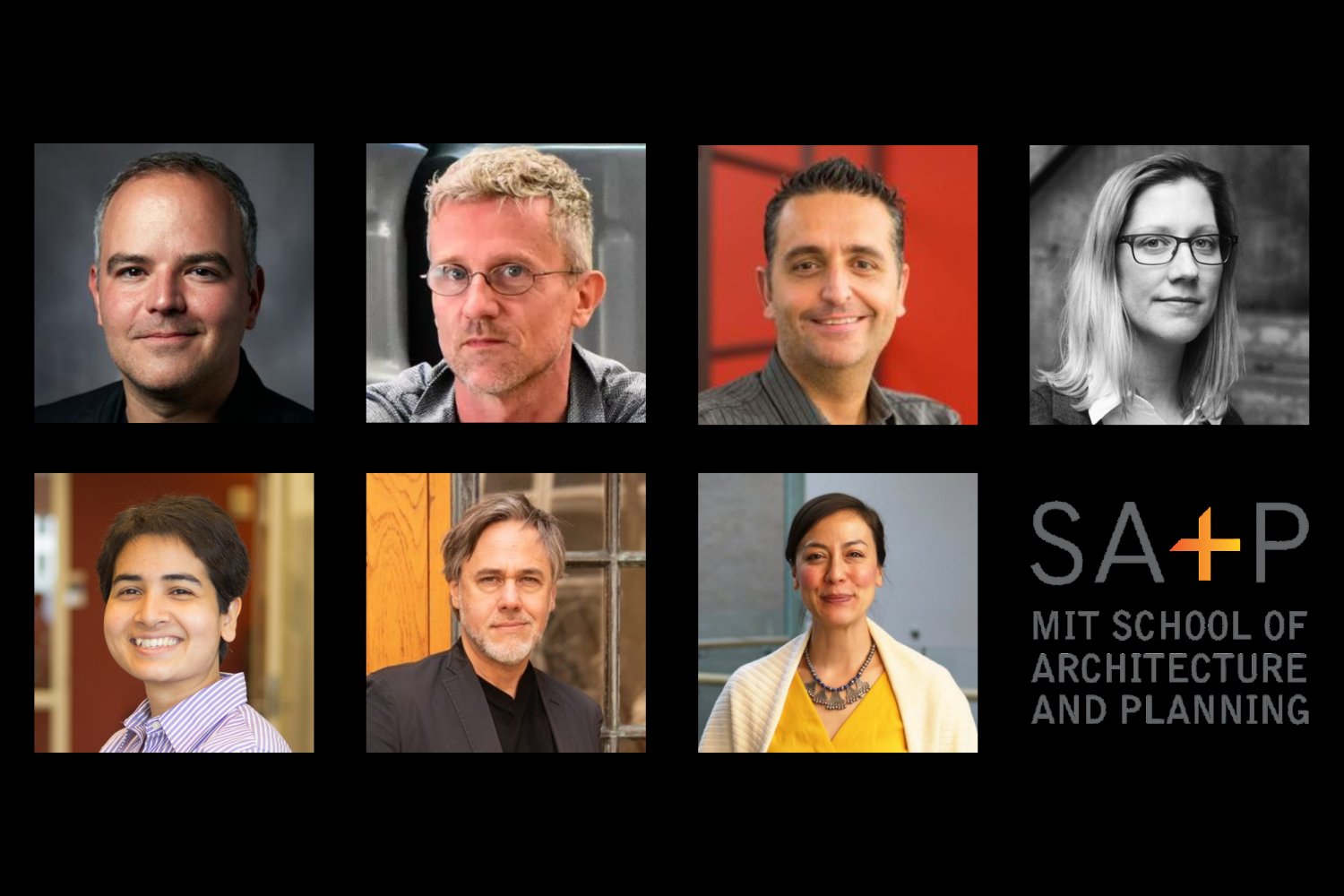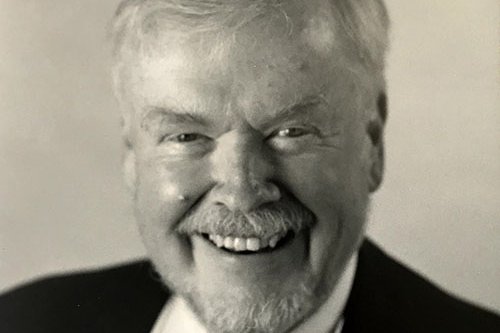
00:00 Intro 02:06 Why do all the pros do body part splits? 03:57 Why the research underestimates higher training frequencies? 06:47 Diminishing returns 08:17 Diminishing returns per session …
Read full articleJuly 22, 2025 • By Noblis, Inc.
Noblis, Inc., a provider of science and technology services, has made a strategic investment in Prediction Guard, a cloud software company specializing in secure AI systems. Prediction Guard's platform allows organizations to deploy and manage AI behind their own firewalls, addressing concerns around data security and regulatory compliance. The investment aligns with Noblis' commitment to responsible AI and will enable strategic collaboration on secure AI deployment. Prediction Guard's CEO expressed excitement about the partnership, citing Noblis' expertise in federal missions and commitment to trustworthy AI deployments.
July 22, 2025 • By Precedence Research
The global health drinks market size was valued at $97.58 billion in 2024 and is expected to reach $144.44 billion by 2034, growing at a CAGR of 4% from 2025 to 2034. The market is driven by the increasing demand for healthy and nutritious drinks, particularly among millennials and Gen Z. The Asia Pacific region is expected to grow at the fastest rate during the forecast period, driven by the high demand for health drinks and plant-based beverages. The market is segmented by type, distribution channel, and region, with fresh packaged fruit juice dominating the market in 2024. The online retail segment is expected to grow in the expected timeframe, driven by the growth of e-commerce platforms. Key players in the market are investing in AI-powered personalization, clean labels, and sustainable packaging to gain a competitive edge.
July 22, 2025 • By Qiuping Liu, Chao Gong, Tianjing Zhou, Minglu Zhang, Xiaofei Liu, Xun Tang, Pei Gao
Here is a concise summary of the news article: A new study compared two approaches for determining statin eligibility in primary prevention of cardiovascular disease (CVD) in Chinese adults. The conventional approach uses absolute 10-year CVD risk scores, while the individualized benefit approach considers predicted lipid-lowering effects. The study found that the individualized benefit approach identified 49.2 million eligible adults, similar to the 50.3 million identified by the absolute risk-based approach, but with a more efficient targeting profile. The benefit approach prioritized individuals with higher predicted benefit from LDL-C lowering, including 8.6 million people who would not be eligible under the absolute risk-based approach. The study suggests that the individualized benefit approach can enhance shared decision-making in resource-constrained settings and improve treatment efficiency.
July 22, 2025 • By Suzanne Hamilton, Jan R. Boehnke, Neil Humphrey, Pamela Qualter
A qualitative study explored teachers' perceptions of the differential impacts of a universal school-based social and emotional learning (SEL) intervention, PATHS. The study involved semi-structured interviews with 105 teachers from 23 primary schools in Greater Manchester. The results showed that teachers believed students' demographic backgrounds, such as socioeconomic status and special educational needs, influenced their engagement with and responsiveness to the intervention. Teachers also suggested that students needed a certain initial level of social and emotional skills to benefit from the intervention. The study highlights the importance of considering teacher expectations and beliefs about pupils' characteristics, as these can impact implementation quality and judgments of impact. The findings have implications for practice and future research, emphasizing the need to understand how individual and socio-demographic characteristics moderate outcomes in SEL interventions.
July 22, 2025 • By Benjamin P. L. Meza, Lee Simões, Gery Ryan, Marisa Saunders, Kristina Turley, Rebecca N. Dudovitz, Mitchell D. Wong
A recent study explored the impact of cooperative learning on adolescent social dynamics and health. Researchers conducted semi-structured interviews with 12 students from a large urban public high school, examining their perceptions of cooperative learning techniques and their effects on social networks and health. The study found that cooperative learning fostered social-emotional skills, stronger social networks, and protective factors for health, while also helping to reduce social anxiety among shy or socially isolated students. The results highlight the potential of cooperative learning to improve adolescent health and well-being by promoting positive relationships and social-emotional skills. Key findings include: * Cooperative learning techniques were used in both Linked Learning and traditional high school classrooms, with students describing the development of relationship skills, social awareness, and self-management. * Students emphasized the importance of social-emotional skills, such as leadership, communication, and self-advocacy, in cooperative activities. * Cooperative learning was found to stimulate a continuum of social relationships, ranging from intimate friendships to productivity-based classmate relationships. * Students who reported feeling socially isolated found cooperative group projects to be a nurturing environment for refining social skills. Overall, the study suggests that cooperative learning can have a positive impact on adolescent social dynamics and health, and that it may be a useful tool for promoting positive relationships and social-emotional skills in the classroom.
July 22, 2025 • By Christoph Binsfeld, Roberto Olayo-Alarcon, Lucía Pérez Jiménez, Morgane Wartel, Mara Stadler, André Mateus, Christian Müller, Ana Rita Brochado
Here is a concise summary of the news article: Researchers investigated how Gram-negative bacteria, such as E. coli, regulate the transport of molecules across their cell membranes in response to different chemical cues. They found that one-third of the tested compounds triggered transcriptional changes in the bacteria, with many of these changes being previously unknown. The study identified new modulators of bacterial transport, including macrolide antibiotics and the non-antibiotic compound caffeine. The researchers also discovered that bacteriostatic antibiotics, which inhibit bacterial growth without killing the bacteria, are more likely to trigger transcriptional changes than bactericidal antibiotics, which kill the bacteria. Additionally, they found that compounds that impact transport regulation can decrease the concentration of certain antibiotics, leading to antibiotic antagonism. The study provides new insights into how bacteria respond to environmental cues and how this response can be targeted to develop new treatment strategies.
July 22, 2025 • By Maryam Karimi Ghahfarokhi, Mehdi Yaseri, Mostafa Hosseini, Fatemeh Masaebi
Here is a concise summary of the news article: A study of 4,144 adult patients in Iran undergoing peritoneal dialysis (PD) used a flexible parametric cure model to analyze survival data and identify risk factors for technique failure. The model estimated a cure fraction of 50% and found that age, calcium, LDL, ESR, and DBP significantly impacted the survival of non-cured patients. The study suggests that using cure models can provide a more accurate understanding of PD failure and guide clinical decision-making. The findings can help improve patient management strategies and reduce the risk of technique failure in PD patients.
July 22, 2025 • By Amanda Tissawak, Yarden Rosin, Shirly Katz Galay, Alia Qasem, Michal Shahar, Nirit Trabelsi, Ora Furman-Schueler, Steven M. Johnson, Anat Florentin
Here is a concise summary of the news article in 8173 tokens or less: Researchers have identified a crucial protein called chaperonin 60 (CPN60) in the apicoplast of Plasmodium parasites, which is essential for the parasite's survival. The apicoplast is a unique organelle found in these parasites that produces essential metabolites. The study found that CPN60 is involved in maintaining the stability of the apicoplast proteome and is required for the biogenesis of the organelle. The protein interacts with the Clp proteolytic complex and regulates its stability. The researchers also screened a panel of inhibitors for the bacterial CPN60 orthologue GroEL and found that they demonstrated anti-Plasmodium activity, making them potential antimalarial drugs. The study sheds light on the importance of CPN60 in maintaining organelle proteostasis and parasite viability, and opens a new avenue for antimalarial drug discovery.
July 22, 2025 • By Chenghui Jin
A recent study investigated the effects of game-based learning on tactical awareness and skill development in golf training programs. The study involved 45 male athletes aged 18-30, divided into three groups: Tactical Awareness Training Group (TATG), Skill-Based Training Group (SBTG), and an Active Control Group (ACG). The intervention lasted eight weeks, with TATG focusing on tactical awareness through scenario-based learning and SBTG emphasizing technical proficiency through technique-focused drills. The results showed significant improvements in tactical awareness for TATG, with increases of 15.6%, 18.9%, and 19.2% in Knowing About Ball Actions, Acting in Changing Situations, and Positioning and Deciding, respectively. SBTG showed significant improvements in technical skills, including drive distance, putting accuracy, and swing consistency. The study highlights the benefits of integrating tactical and technical training strategies in golf, with game-based learning improving situational adaptability and strategic decision-making, while skill-focused training resulted in superior precision and consistency. The findings advocate for a holistic approach to golf training, incorporating both cognitive and physical components to optimize performance outcomes.
July 22, 2025 • By Yunsuk Choi, Hyunseok Jee
Here is a concise summary of the news article: A new study aims to evaluate the effectiveness of a personalized exercise intervention, called EXESALUS, in improving physical and mental health outcomes in cancer patients. The 3-month, parallel-group, randomized controlled trial will involve 500 participants, including 100 cancer patients and 300 non-cancer patients with elevated disease risk. Participants will engage in low-, moderate-, and high-intensity exercise tailored to their genomic profiles, supported by exercise counseling and wearable device feedback. The study will assess physical performance, muscle strength, and skeletal muscle mass, as well as mental health indicators such as fatigue, resilience, anxiety, and depression. The goal is to provide a detailed framework for implementing personalized exercise interventions that incorporate genomic analysis, with the potential to improve cancer prevention and management. The study is registered in the Korean Clinical Trials Registry and has been approved by the Institutional Review Board of Yeungnam University.
July 22, 2025 • By Akshat Gupta, Lilin Huang, Jinpeng Liu, Ke Chen, Ren Xu, Wei Wu
Here is a concise summary of the news article: Researchers investigated the role of P4HA1, an enzyme involved in collagen production, in mouse mammary glands. They used single-cell RNA sequencing and a gene regulatory network (GRN) approach to analyze basal epithelial cells in control and P4HA1-knockout mice. The study identified a unique subcluster of basal epithelial cells in control mice with a distinct regulatory pattern, which was absent in P4HA1-deficient mice. This subcluster exhibited concurrent activation of stem cell development and inflammatory response pathways, suggesting that P4HA1 plays a role in regulating these processes linked to cancer initiation and progression. The findings suggest that targeting P4HA1 may offer a promising therapeutic strategy for breast cancer treatment. The study provides new insights into the role of P4HA1 in regulating inflammation and immune responses, as well as stem cell differentiation within basal epithelial cells of the mouse mammary gland.

July 22, 2025 • By tereza.pultarova@futurenet.com (Tereza Pultarova) , Tereza Pultarova
The European Space Agency's (ESA) ExoMars mission has successfully tested its 118-foot-wide parachute, the largest ever designed to land on Mars. The parachute system, which includes a 50-foot-wide first-stage chute and a secondary 118-foot-wide chute, was tested in the Arctic with a mock lander. The test was a success, with the parachute slowing down the mock lander to a safe speed. The ExoMars mission, which aims to search for signs of life on Mars, has been delayed several times due to technical issues and funding problems. However, with NASA committing to provide funding and the successful parachute test, the mission is now on track to launch in 2028.
July 22, 2025 • By Precedence Research
The global medical packaging films market is expected to grow from $9.36 billion in 2025 to $17.65 billion in 2034. The market is driven by increasing demand for safe and durable packaging solutions in the healthcare sector. Medical packaging films are used to package pharmaceuticals, medical devices, and diagnostic products, ensuring product integrity and protection against external factors. The market is influenced by advancements in material science, rising healthcare expenditure, and stringent regulatory requirements. Sustainability concerns are also driving the shift towards recyclable and bio-based medical packaging films. The Asia Pacific region dominates the market, followed by North America and Europe. The polypropylene packaging segment is expected to grow at the fastest CAGR, while the thermoformable packaging segment holds a dominant position. The barrier films segment is the fastest-growing segment, driven by the need for enhanced protection and extended shelf life of sensitive medical products.

July 22, 2025 • By The Phong Justin Ngo | School of Architecture and Planning
Seven faculty members at the MIT School of Architecture and Planning (SA+P) have been honored with promotions, effective July 1. The promotions include three in the Department of Architecture, three in the Department of Urban Studies and Planning, and one in the Program in Media Arts and Sciences. The promoted faculty members are: * Marcelo Coelho, promoted to associate professor of the practice in the Department of Architecture * Holly Samuelson, promoted to associate professor without tenure in the Department of Architecture * Rafi Segal, promoted to full professor in the Department of Architecture * Carlo Ratti, reappointed as professor of the practice in the Department of Urban Studies and Planning * Albert Saiz, promoted to full professor in the Department of Urban Studies and Planning * Delia Wendel, promoted to associate professor without tenure in the Department of Urban Studies and Planning * Deblina Sarkar, promoted to associate professor without tenure in the Program in Media Arts and Sciences These faculty members have made significant contributions to their fields, including architecture, urban planning, and media arts and sciences. They have been recognized with numerous awards and honors for their work, and have published extensively in their areas of expertise. According to SA+P Dean Hashim Sarkis, they "represent our school at its best, in its breadth of inquiry and mission to improve the relationship between human beings and their environments."

July 22, 2025 • By Knight Science Journalism Program at MIT
Victor K. McElheny, a renowned journalist and author, has passed away at 89. He founded MIT's Knight Science Journalism Program over 40 years ago and served as its director for 15 years. McElheny had a storied career spanning seven decades, writing for leading newspapers and magazines, and producing groundbreaking coverage of national stories. He is remembered as a champion of science journalism, working tirelessly to help the field thrive. McElheny's program has supported over 400 leading science journalists worldwide, and he remained involved with the program until his death. His legacy continues to inspire science journalists, and his family invites memorial gifts to the Victor K. McElheny Award Fund.
July 22, 2025 • By Zhaoyang Wei, Wenhao Su, Hairong Jia, Luo Yang, Jiaqi Zhang, Yanru Wang
Researchers are conducting a systematic review and meta-analysis to identify risk factors for lung infection in diabetes patients. The study aims to analyze existing literature to provide recommendations for targeted treatment strategies. Diabetes patients are more prone to lung infections due to abnormal blood sugar levels, vascular endothelial damage, and altered capillary permeability. The researchers will search multiple databases, including PubMed, Embase, and Cochrane Library, and evaluate the quality of included studies using the Newcastle Ottawa Scale and Agency for Healthcare Research and Quality. The study will use RevMan 5.4 software and STATA 16.0 for data analysis and employ the Grading of Recommendations Assessment, Development, and Evaluation (GRADE) approach to assess the quality of evidence. The results will summarize the current evidence on risk factors for lung infection in diabetes patients, providing reliable advice for clinicians to make informed decisions and support effective prevention strategies.
July 22, 2025 • By Oishik Kar, Arka Mukherjee, Koustav Mukherjee, Debdeep Pramanik, Atanu Naskar, Dhriti Banerjee
Here is a concise summary of the news article: Researchers in India conducted a study to assess the effectiveness of the cytochrome oxidase 1 (COI) gene in identifying 17 species of blow flies from the Calliphoridae family. The study collected 2,977 blow fly specimens from four distinct geo-climatic zones in West Bengal and used DNA barcoding to identify the species. The results showed that COI barcodes were able to confirm morphological identification with high accuracy, and the Neighbour-Joining (NJ) analysis demonstrated well-supported reciprocal monophyly among the species. The study also used four delimitation methods (BIN, ASAP, PTP, and GMYC) to identify the species, which produced similar results. The findings of this study provide crucial information on the distribution and variety of forensically relevant fly species in West Bengal and highlight the importance of accurate species identification in forensic entomology. The study concludes that COI barcodes are a highly successful alternative for the molecular identification of blow flies, facilitating forensic cases and biodiversity research in India.
July 22, 2025 • By Mart Sillen, Sarah Lebeer, Patrick Van Dijck
Here is a concise summary of the news article: The vaginal microbiome (VMB) is a complex ecosystem that plays a crucial role in women's health, influencing mucosal immunity, infection prevention, and reproductive health. The VMB is composed of various microorganisms, including bacteria, fungi, viruses, and protozoa, with lactobacilli being the most abundant. However, the concept of a "healthy" VMB is context-specific and can vary depending on factors such as biogeography, hormones, genetics, behavior, and environment. Research has identified five main Community State Types (CSTs) of VMB, with CSTs I, II, III, and V dominated by different Lactobacillus species. CST IV is characterized by diverse anaerobes, including Gardnerella and Prevotella spp. While Lactobacillus-dominant communities are generally linked to positive outcomes, not all non-Lactobacillus profiles signify dysbiosis. The VMB is influenced by various factors, including host genetics, hormonal fluctuations, personal habits, and biogeographical context. Dysbiosis, or the disruption of the VMB, can lead to vaginal infections such as bacterial vaginosis, vulvovaginal candidiasis, and trichomoniasis. Probiotics, particularly Lactobacillus species, have shown promise in managing vaginal dysbiosis by supporting mucosal homeostasis, inhibiting pathogen colonization, and modulating immune responses. However, strain selection, host factors, and timing are crucial in determining probiotic efficacy. Overall, the VMB is a dynamic and complex ecosystem that plays a critical role in women's health, and further research is needed to understand its mechanisms and develop effective interventions to restore vaginal health.
July 22, 2025 • By Shunxiang Fan, Tim Newbold, Jan C. Axmacher, Charlotte L. Outhwaite, Yi Zou, Zhenrong Yu, Yunhui Liu
Here is a concise summary of the news article: Researchers investigated the impact of nitrogen (N) deposition on arthropod diversity worldwide. They combined data from the PREDICTS database with global N deposition and land cover data, using mixed-effects models to analyze the relationship between N deposition and arthropod biodiversity. The results showed that N deposition has a negative effect on arthropod biodiversity, with both species richness and abundance significantly reduced in areas with high N deposition levels. The strongest negative effects were observed in areas with minimal anthropogenic modification. However, the presence of semi-natural and natural habitats (SNH) in the surrounding landscape was found to mitigate the negative effects of N deposition on arthropod diversity. The study suggests that conserving and creating SNH can help promote arthropod diversity, even in areas with high N deposition levels.